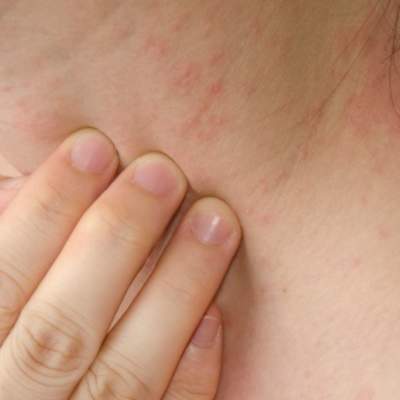Hives (medically known as urticaria) appear on the skin as wheals that are red, very itchy, smoothly elevated areas of skin often with a blanched center. They appear in varying shapes and sizes, from a few millimeters to several centimeters in diameter anywhere on the body.
It is estimated that 20% of all people will develop urticaria at some point in their lives. Hives are more common in women than in men. One hallmark of hives are their tendency to change size rapidly and to move around, disappearing in one place and reappearing in other places, often in a matter of hours. An individual hive usually lasts no longer than 24 hours. An outbreak that looks impressive, even alarming, first thing in the morning can be completely gone by noon, only to be back in full force later in the day. Very few skin diseases occur and then resolve so rapidly. Therefore, even if you have no evidence of hives to show the doctor when you get to the office for examination, the diagnosis can be established based upon the accurate recounting of your symptoms and signs. Because hives fluctuate so much and so fast, it is helpful to bring along a photograph of what the outbreak looked like at its most severe point.
Swelling deeper in the skin that may accompany hives is called angioedema. This swelling of the hands and feet, as well as the face (lips or eyelids), can be as dramatic as it is brief.



 Contact Us
Contact Us






 Hospitals
Hospitals
 Doctors
Doctors
 Diagnostic
Diagnostic
 Pharmacy
Pharmacy
 Health Tips
Health Tips
 Blog
Blog

























Comments